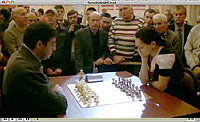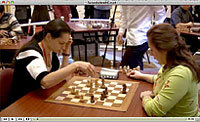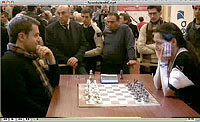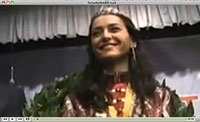Six Lewis Chessmen to Return to Scotland Museum!
Chess blog for latest chess news and chess trivia (c) Alexandra Kosteniuk, 2012
Hi everyone,
Hi everyone,
Scotsman has just reported that at least six of the famous Lewis Chessmen would feature as part of permanent display at the new Museum and Archive at Lews Castle when it opens in 2014 after a £13.5m revamp.

Western Isles MP MacNeil had demanded that all the 82 pieces be “repatriated” from the British Museum to Scotland. Another 11 pieces are with the National Museum of Scotland in Edinburgh. Former culture minister Linda Fabiani was sent to London to view the chessmen and make the public case for their return. But museum chiefs said moving the chessmen back to Scotland was impossible, since it would open a Pandora’s box for the return of artefacts.
Unlike some of the British Museum’s controversial artefacts such as the Elgin marbles, the chessmen were not plundered but bought for 80 guineas from an Edinburgh dealer who himself had paid £30 for them.
The types of pieces have not yet been revealed.
The loan agreement has resulted from a formal partnership between Comhairle nan Eilean Siar (Western Isles Council) and the British Museum. The new gallery space will also be a partnership gallery with the British Museum.
Last year, a touring exhibition of 29 of the pieces saw more than 120,000 people flock to see the priceless artefacts in Scotland. In total 90 pieces were discovered beneath a sand dune near Uig - and are the most expensive and famous chess pieces in the world.
Some experts believe the intricately carved pieces to be of Scandinavian origin - others that they could have been made in Scotland by a master craftsman influenced by Viking art.
Most historians believe they were probably made in Norway in around 1200AD, and were originally bound for Ireland.
Lewis was once part of the Norse Kingdom of Mann and the Isles between 1079 and 1266.
From Alexandra Kosteniuk's
www.chessblog.com
Also see her personal blog at
www.chessqueen.com

Western Isles MP MacNeil had demanded that all the 82 pieces be “repatriated” from the British Museum to Scotland. Another 11 pieces are with the National Museum of Scotland in Edinburgh. Former culture minister Linda Fabiani was sent to London to view the chessmen and make the public case for their return. But museum chiefs said moving the chessmen back to Scotland was impossible, since it would open a Pandora’s box for the return of artefacts.
Unlike some of the British Museum’s controversial artefacts such as the Elgin marbles, the chessmen were not plundered but bought for 80 guineas from an Edinburgh dealer who himself had paid £30 for them.
The types of pieces have not yet been revealed.
The loan agreement has resulted from a formal partnership between Comhairle nan Eilean Siar (Western Isles Council) and the British Museum. The new gallery space will also be a partnership gallery with the British Museum.
Last year, a touring exhibition of 29 of the pieces saw more than 120,000 people flock to see the priceless artefacts in Scotland. In total 90 pieces were discovered beneath a sand dune near Uig - and are the most expensive and famous chess pieces in the world.
Some experts believe the intricately carved pieces to be of Scandinavian origin - others that they could have been made in Scotland by a master craftsman influenced by Viking art.
Most historians believe they were probably made in Norway in around 1200AD, and were originally bound for Ireland.
Lewis was once part of the Norse Kingdom of Mann and the Isles between 1079 and 1266.
From Alexandra Kosteniuk's
www.chessblog.com
Also see her personal blog at
www.chessqueen.com
Labels: lewis chess men


































2 Comments:
At June 13, 2012 at 3:18 PM , alexis cochran, nz said...
alexis cochran, nz said...
Going home huh
At June 14, 2012 at 5:48 AM , Anonymous said...
Anonymous said...
The Elgin Marbles were not plundered either.
Post a Comment
Note: Only a member of this blog may post a comment.
Subscribe to Post Comments [Atom]
<< Home